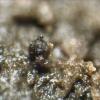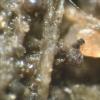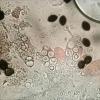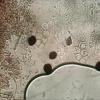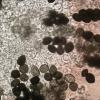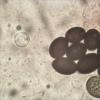
30-12-2025 16:44
Pascal DucosBonjour,Une anamorphe rose stipitée, très nombre

30-12-2025 17:14
 Bernard CLESSE
Bernard CLESSE
Bonjour à toutes et tous,Pourriez-vous aider Albe

29-12-2025 10:15
Hulda Caroline HolteHello, I found and collected this propoloid ascom

30-12-2025 09:04
Hello.A Pyrenomycete sprouting sparsely but very d

29-12-2025 17:44
Isabelle CharissouBonjour,J'aimerais savoir si d'autres personnes au

12-11-2021 00:03
Lepista ZacariasHi everybody,A week ago in my fiels trip I noticed

29-12-2025 17:12
 Bernard CLESSE
Bernard CLESSE
Bonjour à toutes et tous,Pourriez-vous m'aider à
 Found on horse dung.
Found on horse dung.Ascomata: Sphaerical; 366 um in diameter with a short neck 65 um wide & 34 um high.
Asci: 8-spored; 53-8-54.2 (-59.8)x21.6-24.8 (-28.4) um
Spores: biseriate; (13.4-)17.4-20.4x(13.2-)14.2-15.7x10.5-12.3 um; at first when immature sphaerical, becoming ellipsoidal and finally citriform with apiculate germ pores.
In contrast with the publication of Garcia the measurement of the ascomata is more than indicated and there was no report about the presence of a short neck (photo-8), not the best example but measurements are correct.
Photo-2 shows a spore release through the neck of the ascomata.
Reference:
Dania García, Alberto M. Stchigel, and Josep Guarro (2004) Two new species of Sphaerodes from Spanish soils; Studies in mycology 50: 65-66
X.W. Wang, F.Y. Bai, K. Bensch, M. Meijer, B.D. Sun, Y.F. Han, P.W. Crous, R.A. Samson, F.Y. Yang, and J. Houbraken (2019) Phylogenetic re-evaluation of Thielavia with the introduction of a new family Podosporaceae. Studies in mycology 93: fig. 9.
Yasmina Marin-Felix, Josep Guarro, José F. Cano-Lira, Dania García, Andrew N. Miller, Alberto M. Stchigel (2018) Melanospora (Sordariomycetes, Ascomycota) and its relatives Mycokeys 44: 114 & 109
Joop


Thanks for the reply I overlooked the fact of the ostiole and besides that the size of the ascomata is too big.
I have been looking for possibilities with ascomata having ostioles and a bigger size plus citriform spores and for that I ended up with Mi. marchicum.
According to Lindau (1886) and Saccardo (1899) the size of the ascomata and spores for Mi. marchicum are smaller, so no similarity.
It still may be a Microthecium species in my opinion but question is if it makes a diffecrence that the appearance of these species is mainly on soil and my finding was on dung.
Joop



